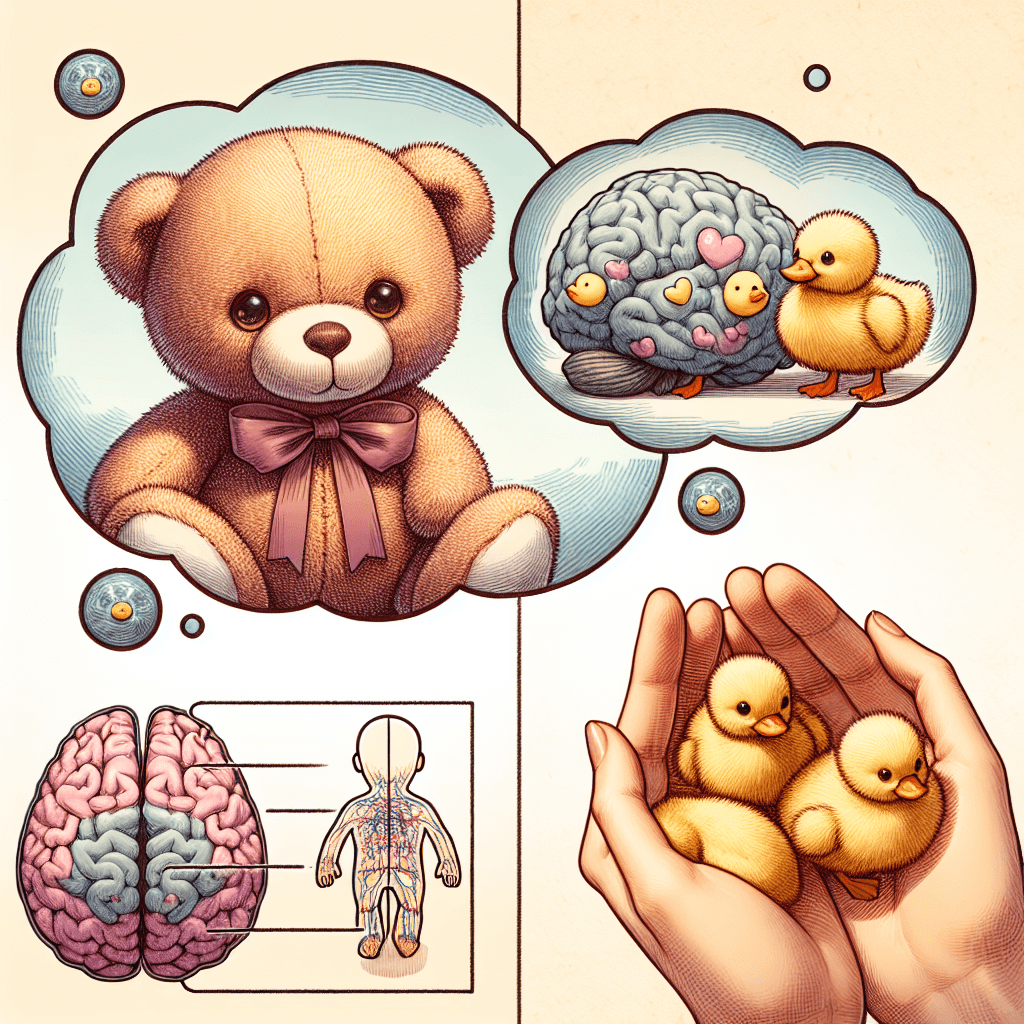Why do we get the urge to squeeze cute things
Ever felt an almost aggressive urge to squeeze an unbearably cute puppy? It’s not just you—it’s a bizarre psychological phenomenon, and the science behind why our brains do it is fascinating.


Too Long; Didn't Read
TLDR: It’s called cute aggression. When your brain is overwhelmed by positive feelings from seeing something adorable, it produces a harmless, aggressive-seeming response like squeezing to help balance out and regulate that intense emotion.
Cute Aggression Explained: Why Do We Get the Urge to Squeeze Cute Things?
Have you ever seen a puppy with oversized paws or a baby with impossibly chubby cheeks and felt an overwhelming, almost violent urge to squeeze it, pinch it, or even bite it? You know you don’t want to cause harm, yet the impulse is undeniable. This strange, contradictory feeling is a common human experience, and it has a name: cute aggression. While it might sound alarming, this phenomenon is a perfectly normal, and fascinating, quirk of our emotional wiring. This post will explore the science behind why our brains react to adorable things with a display of mock aggression.
What is Cute Aggression?
The term "cute aggression" was first explored in a 2015 study by researchers at Yale University. It’s defined as a type of dimorphous expression of emotion. This is a psychological concept where you express a strong emotion with an action that seems to contradict that feeling. Think of tears of joy at a wedding or laughing nervously in a tense situation—these are other common examples.
When you experience cute aggression, the overwhelming positive feeling of seeing something adorable is expressed through actions typically associated with anger or frustration, such as:
- Clenching your fists
- Gritting your teeth
- Making squeezing motions
- Voicing an urge to "eat it up"
Crucially, this urge is not rooted in a desire to cause actual harm. Instead, it’s a powerful, fleeting impulse that occurs when our positive emotions go into overdrive.
The Science Behind the Squeeze: The Brain's Balancing Act
So, why does our brain respond to a fluffy kitten with the impulse to squish it? The leading theory suggests it’s a form of emotional regulation.
The Overload Hypothesis
When we see something incredibly cute, our brain's reward system is flooded with dopamine, the "feel-good" neurotransmitter. This creates an intense, and sometimes overwhelming, wave of positive emotion. According to the research from Yale, this emotional surge can be so powerful that our brains struggle to manage it.
To prevent us from being completely incapacitated by this cuteness overload, the brain introduces a hint of an opposing emotion—in this case, aggression. This small dose of a "negative" feeling helps to temper the overwhelming positive one, bringing our emotional state back to a more manageable level. It’s like a built-in thermostat for your feelings, ensuring you don’t get stuck in a state of giddy, unproductive awe.
Subsequent research, including a 2018 study published in the journal Frontiers in Behavioral Neuroscience, used EEGs to measure brain activity. Researchers found that cute aggression is linked to both the brain's reward system and its emotion system, confirming that this phenomenon is a complex interplay between feeling overwhelmed by positive emotions and the brain’s attempt to regulate them.
The Evolutionary Trigger: Why We Find Things Cute
The very concept of "cuteness" is a powerful evolutionary tool. Austrian ethologist Konrad Lorenz proposed the concept of Kindchenschema, or "baby schema," which describes a set of physical features that trigger a caregiving response in adults. These features include:
- A large head relative to the body
- A high, protruding forehead
- Large eyes set low on the face
- A small nose and mouth
These traits are characteristic of human infants and the young of many animal species. Our innate attraction to them ensures that we feel a strong desire to protect and nurture our offspring, promoting their survival. Cute aggression appears to be a byproduct of this deeply ingrained, powerful biological response. The cuteness is so effective at capturing our attention and caregiving instincts that it occasionally overloads the system.
A Sign of a Healthy Brain
The next time you feel that strange urge to squeeze a cute creature, you don't need to worry. Cute aggression is not a sign of a hidden aggressive streak. On the contrary, it’s a fascinating testament to your brain’s incredible ability to manage its own complex emotional landscape. This impulse is a quirky, harmless, and entirely normal response to being overwhelmed by the positive feelings that cuteness inspires. So, embrace the weirdness—it’s just your brain's way of keeping you grounded in a world full of adorable things.
More Articles

Why do movie punches sound so much crunchier and louder than real ones?
That sickening, bone-crunching punch you hear in the movies is a lie, and the secret ingredient is probably sitting in your refrigerator right now.

What makes a beer bottle suddenly foam over just from a light tap on top?
It’s not magic, it’s a shockwave; discover the explosive physics that turns a gentle tap on your beer bottle into an instant foamy geyser.

Why do police officers touch the back of a car during a traffic stop?
It’s not a random habit; that simple touch is a calculated, old-school tactic designed to leave a crucial and potentially life-saving piece of evidence behind.